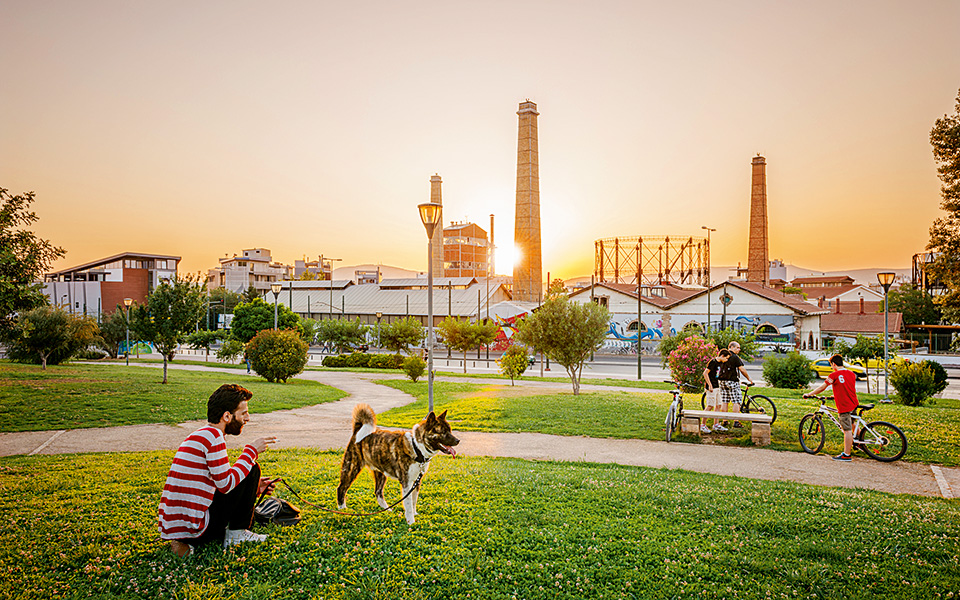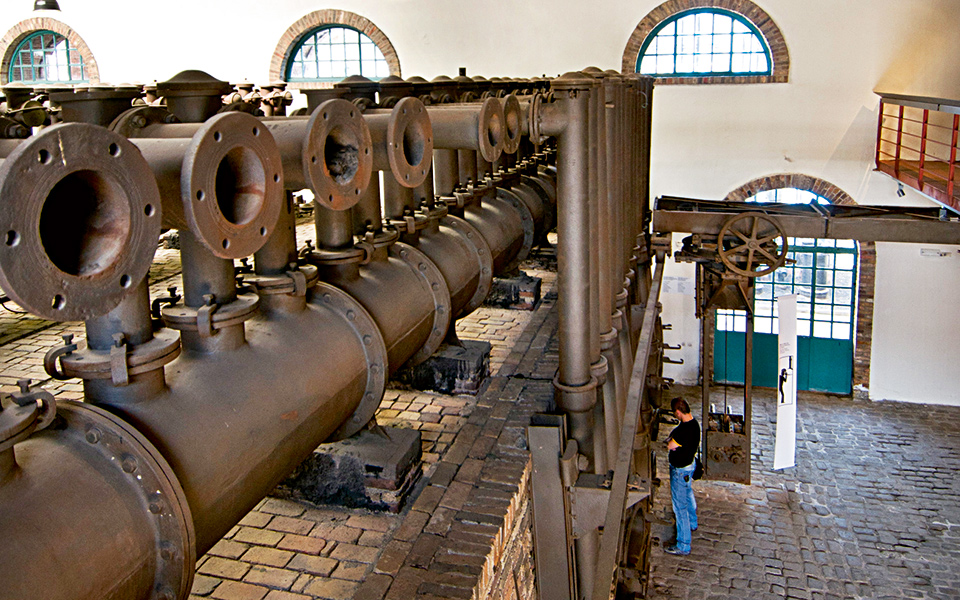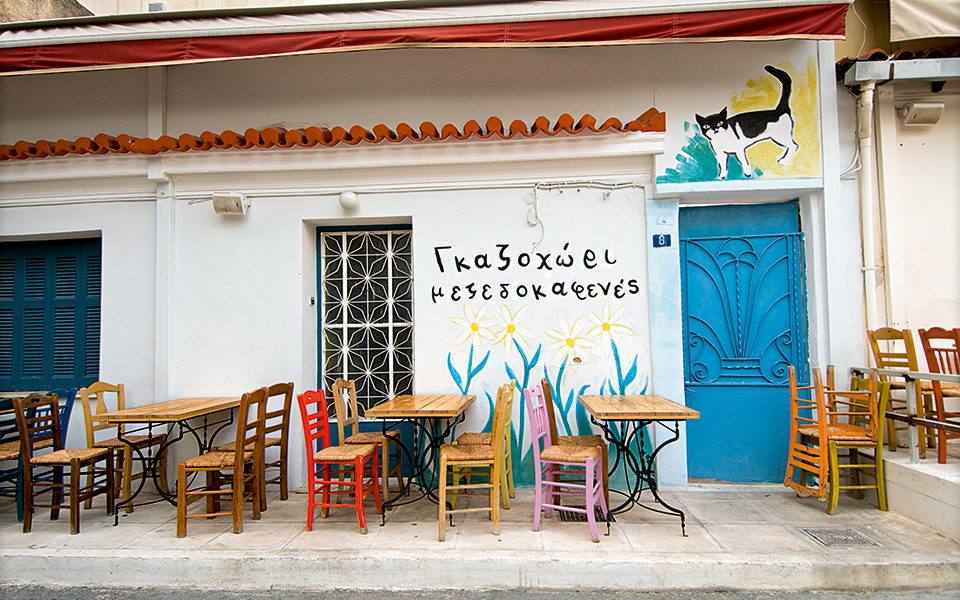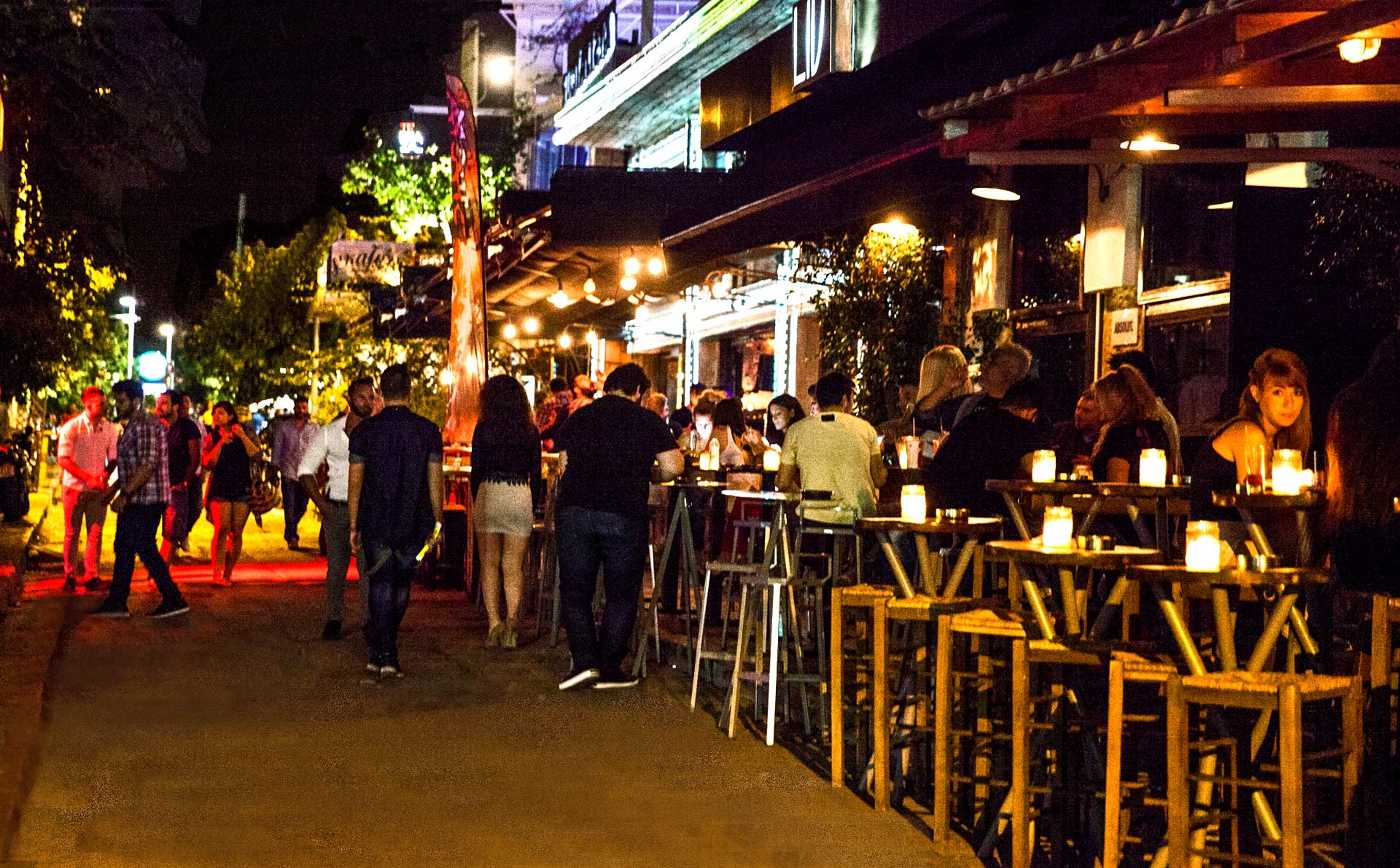14 Stunning Rooftops in Athens for Food, Views...
From Michelin-starred tasting menus to sushi...

The historic gas factory looms over the Gazi district.
For a scenic route there, take Ermou Street all the way
to this small park at its end.
© Laif/www.iml.gr
Riding up the escalator of the Kerameikos metro station brings you into one of the largest public squares in Athens, often frequented by throngs of locals who are heading to one of the area’s dozens of bars and restaurants or are content simply to hang out on a park bench, sipping a cold beer from the kiosk and watching the world go by.
The most emblematic structure in Gazi and the area’s namesake is the mid-19th century gas (gazi in Greek) factory, which dominates the skyline with its imposing iron structures and stone chimneys. The factory was instrumental in the development of this relatively poor, yet vibrant working-class neighborhood.

The Industrial Gas Museum is among only a handful in Europe that showcase 19th century industrial design, technology and architecture.
© Clairy Moustafellou

Quite a few traditional one-storey and two-storey houses still survive in Gazi today.
© Clairy Moustafellou

Gazi has gained hugely in popularity during the past few years.
© Dimitris Vlaikos
Persefonis was Gazi’s first and most popular street, the point at which the transformation of the area into part of the urban fabric began. Today it is lined with cafes, bars and restaurants. I counted 15 eateries serving everything from souvlaki and hamburgers to Greek home-style dishes and crepes.
A row of small, time-worn houses on Persefonis and Dekeleon streets represent the last traces of the village that grew up around the gas plant in the late 19th and early 20th centuries. It began as a collection of makeshift huts, humble homes and narrow streets built by factory workers. Today these relics of the past have become a favorite hangout for the capital’s young people.
From Michelin-starred tasting menus to sushi...
As Greeks gather for their Tsiknopempti...
The charming port city of Volos...
Shady hiking trails, a vibrant cultural...